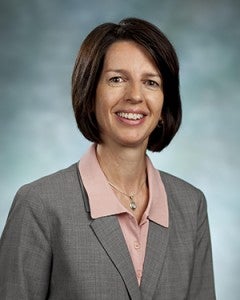Partnerships will help rural Minn. move ahead
Published 9:37 am Thursday, July 23, 2015
Guest Column by Brian Herman and Maura Donovan
Greater Minnesota faces a growing challenge. Regional economies throughout the state are feeling the effects of unsteadiness in key industries like manufacturing and agriculture. In some cases, jobs and consequently residents, are moving to the metro area, leaving rural communities with shrinking populations and diminished representation in the state Legislature. Recently, officials from many rural communities expressed disappointment in a legislative session they believe resulted in too little funding for priorities like workforce housing, job training and broadband Internet access.
In order to thrive, Greater Minnesota needs economic development and a more robust workforce. We believe public-private partnerships are the key to encouraging the economic growth, supporting business needs, promoting innovation through research and attracting and developing much-needed workers.
As the state’s land-grant research university, the University of Minnesota has long been a powerful economic engine for Minnesota. By now, you have probably heard that the U creates $8.6 billion in total economic impact annually, and every dollar invested in the U generates about $13 in the statewide economy. The U is also connected to one of every 43 Minnesota jobs and it reaches every county in the state with its research, education and outreach efforts.
But we believe there’s more we can do. In recent months, leaders from the U set out to discover, with help from the Minnesota Initiative Foundation, how the institution can help further bolster Minnesota’s communities. We are now in the process of traveling to every region of the state to meet with local business owners as well as economic development leaders. We are there to listen and to learn about the challenges rural communities face, and from the meetings to date, we have walked away with a better understanding not just for each region’s needs, but for the opportunities available to meet them.
Among the questions business leaders asked: How can the U connect with my company? Where can my company find the skilled workers it needs? What is the U doing to support workforce development?
As we explore new solutions to the needs driving these questions, we invite Minnesota companies, nonprofits and other community organizations to take advantage of resources already available at the U. Partnership begins at our “front door” — the U’s Office of University Economic Development. This office simplifies navigating the U system by directing organizations to the right university research centers, faculty members and technologies. They can choose to work with the U to sponsor research, license university-developed technology, use university laboratories, hire talent or host employee training. There are also U of M Extension offices in counties across the state, along with regional offices and research centers, that provide education and research that can help improve quality of life in rural communities. Through these offices, the U aims to add to the significant and invaluable workforce contributions already being made by the Minnesota State Colleges and Universities System.
We are impressed with the activities already underway in local communities across the state and with their ongoing commitment to these efforts. CNBC’s ranking of Minnesota as America’s Top State for Business in 2015 reflects a statewide culture of commitment to economic development. Continuing these efforts, however, has never been more important, as the need to strengthen the economy in areas across Minnesota is becoming more and more crucial. Manufacturing and agriculture continue to waver, placing pressure on communities through stagnant economic growth. Meanwhile, towns and counties struggle to upgrade aging infrastructure, ranging from the tangible, like roads and bridges, to the technological, like disparities in access to broadband Internet. Local government aid, which has historically helped support towns in funding needs like infrastructure, police and fire, just isn’t what it once was. And local workforces are suffering, too, from a dearth of skilled workers and the housing needed to retain them in the community.
Now is the time to reverse the trend of shrinking rural economies and infuse our communities with business opportunities that create good jobs and attract people to the area. Drawing workers in is the first step in creating lasting prosperity, which will follow when they plant their roots in our communities and stay to make a life there. At the same time, we can spur innovation to advance knowledge and push technology forward. As we at the U of M continue to explore ways to partner with Minnesotans across the state, we hope that the business leaders, public officials and economic development professionals in your community will also consider the ways public-private partnerships can help lay a foundation for our future.
Greater Minnesota may face challenges, but public-private partnerships will help it rise up to meet them. By forming collaborations that encourage growth and working to turn areas of economic need into new opportunities, we can together move Greater Minnesota forward, ensuring its many communities remain great places to live and work.
Brian Herman is the vice president for research at the University of Minnesota.
Maura Donovan is executive director of University Economic Development at the U of M.



